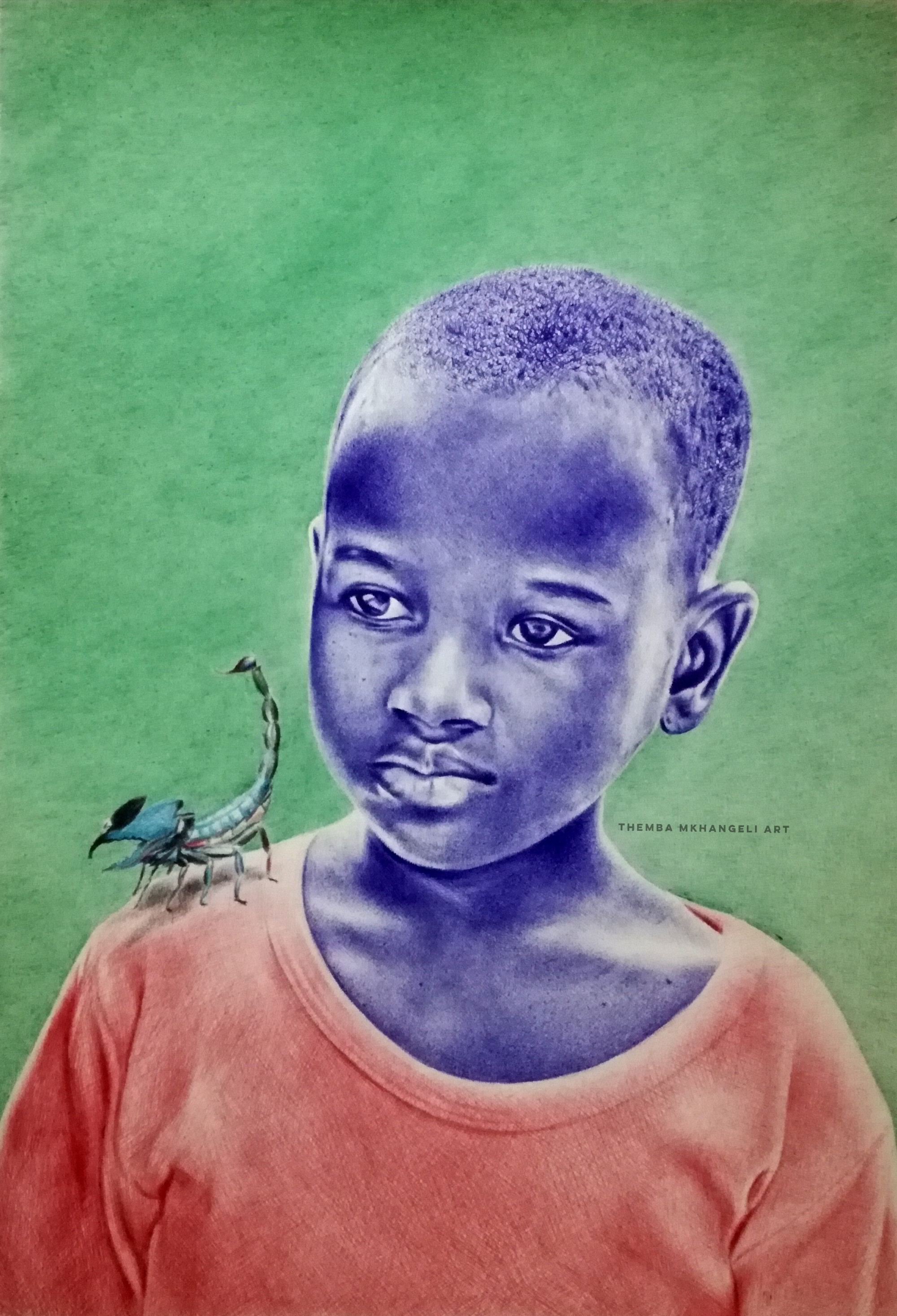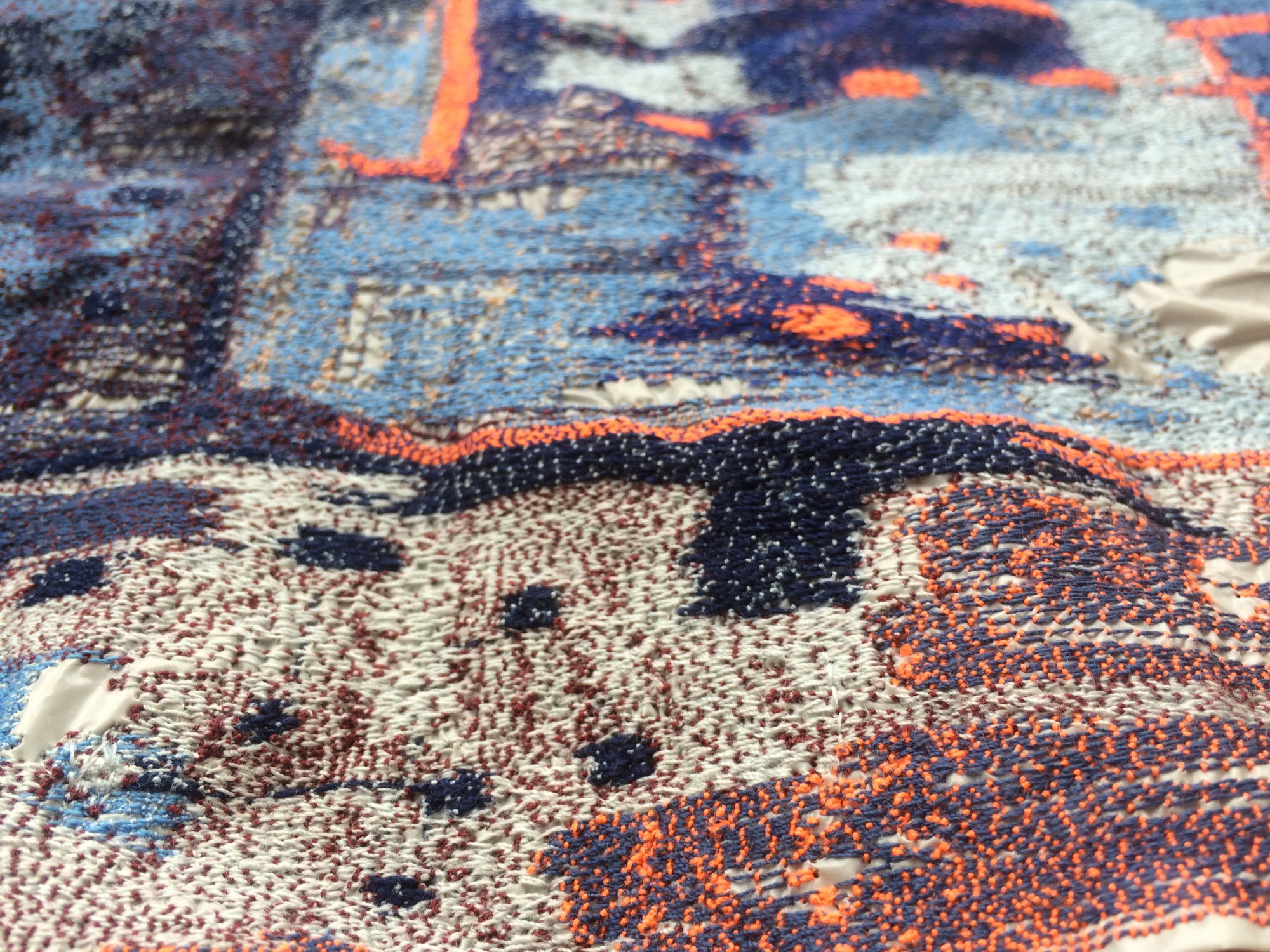Art that explains agroecology
19 February 2019 | Story Ambre Nicolson. Read time 10 min.![Guests enjoy the ‘Insecthibition’: “…a dynamic space in which artists […] explore the important role that insects play in agriculture and beyond,” explains Zayaan Khan, UCT postgraduate researcher and co-curator of the arts programme for the Agroecology in the 21st Century Conference.](/cache/images/userfiles/images/researchoffice/2019/February/800x0/normal/2019-02-15_ArtGallery.jpg)
Maya Marshak and Zayaan Khan are researchers, artists and activists. They are also the curators behind the arts programme of a conference on agroecology for the 21st century. The three-day conference, spear-headed by UCT, in partnership with Biowatch South Africa, the Seed and Knowledge Initiative and Cornell University, brought together farmers, activists, policy-makers and academics to examine food systems and the politics of food production. Marshak and Khan describe how movement, music and an ‘Insecthibition’ can help explain the complexities of agroecology – the application of ecological processes to agriculture.
During January 2019, about 250 delegates – farmers, professors, food justice activists and public officials – gathered at the Centre for the Book in Cape Town for the inaugural Agroecology in the 21st Century Conference.
“Insects are great storytellers”
During January 2019, about 250 delegates – farmers, professors, food justice activists and public officials – gathered at the Centre for the Book in Cape Town for the inaugural Agroecology in the 21st Century Conference. Over three days they participated in a series of workshops and panel discussions with titles like ‘Seed systems’, ‘Landscapes, science and biodiversity’ and ‘Agroecology: a feminist perspective’.
They also had the chance to experience an ‘Insecthibition’.
“Insects are often treated in a binary way: as ‘beneficial insects’ that can be put to work or as ‘pests’ needing to be eradicated. But recent studies have revealed drastic drops in insect populations over the past two decades.
“The Insecthibition is a dynamic space in which artists working a variety of media explore the important role that insects play in agriculture and beyond,” explains Zayaan Khan, co-curator of the arts programme for the conference.
“Insects are often treated in a binary way: as ‘beneficial insects’ that can be put to work or as ‘pests’ needing to be eradicated. But recent studies have revealed drastic drops in insect populations over the past two decades.
“At this point in time, it is the mass extinction of insects that begs us to question our relationships with them and wider ecosystems.”

focuses on the human form.
Maya Marshak, the other half of the curatorial team agrees. “Insects are great storytellers,” she says. “They are at the intersection of so much, we should celebrate these tiny and enormously important beings and bring them into any conversation about food and life on this planet.”
Art and agroecology
Khan and Marshak’s shared fascination with insects is just one of the things that drew them together as collaborators. Both describe themselves as working in an intersectional space. That space includes research and activism, art and food – and most importantly, the recognition that to fix the largely broken industrial food system, we require a more holistic view of the planet, its ecosystems and humankind’s place in the order of things.
Khan, who is currently completing her master’s in environmental humanities, started out studying journalism. “I quickly realised that it wasn’t for me, and so instead, I chose to first study landscaping, followed by horticulture. This was how I found my vocation for food justice and transformation, the Slow Food movement, and working to capacitate areas in which not a lot of work is being done through teaching and learnerships.”
“Nowadays I describe my interests as working between art and science, but in the past, I did a lot of work looking at urban agriculture and food systems.”
Marshak on the other hand completed a diploma in art before changing to environmental science. “Nowadays I describe my interests as working between art and science, but in the past, I did a lot of work looking at urban agriculture and food systems,” she explains.
“I am now working on an interdisciplinary PhD that looks at the impacts of genetically modified organisms and associated technologies on agroecological knowledge on farms and in research and development.”
When Professor Rachel Wynberg – South African Research Chair in Environmental and Social Dimensions of the Bio-economy at UCT and convener of the conference – suggested an arts programme, both Khan and Marshak jumped at the opportunity.
Multi-media for multi-species
Marshak and Khan have deliberately chosen artists working in an array of different media for the programme.
“We chose movement artists, performance artists, musicians and visual artists whose work will hopefully help to open up the conversation about our food systems and how we can all help to create a socially just, environmentally sound, nutritious and healthy food system,” says Khan.

“I think too often scientists put aside the beauty they find in their work in the interests of appearing objective. This is where art can help to re-ignite our sense of wonder and connectedness,” explains Marshak. “This to me is what seeing the world through a multi-species lens looks like, it’s a way of seeing the connections between all the entities that make up our planet in a way that avoids human exceptionalism.”
The conference’s arts programme includes the work of poets, like Siphokazi Jonas and Xolisa Bangani; photographers such as Vanessa Black; Diana Ocholla, who is a dancer and movement artist; and visual artists like Sujay Sunan, who works in watercolour, and ballpoint pen-artist Themba Mkhangeli.”
The future of food
According to Wynberg, by including an arts programme in the conference she hopes to foster interdisciplinary engagement between actors and infuse the space with creative thinking and artistic expression. “This will support the aim of the conference: to help unearth common values underpinning a transformation to agroecology,” she says.
“Agroecology is often seen as something that is backward or anti-poor, and so I think there is a huge amount of work that needs to be done in communicating what agroecology is really about…”
“There is a groundswell of interest in agroecology at present, particularly in Southern Africa,” says Wynberg. “Our hope is to leverage this interest to bring together a whole lot of voices that don’t habitually converse, in a non-traditional conference setting, where we can discuss these topics at a higher level.”
According to Wynberg, the response has been very encouraging. “There seems to be an appetite to look at new models when it comes to agriculture, ones that don’t rely on large, industrial farming methods and which recognise the role of small-scale farmers.
“Agroecology is often seen as something that is backward or anti-poor, and so I think there is a huge amount of work that needs to be done in communicating what agroecology is really about…
“In the past five years, I have seen a huge willingness, particularly among the youth to make society-wide changes. I think this is very hopeful for the future.”
Participating artists
The artists who participated in the creative components of the Agroecology in the 21st Century Conference were:
- Amy Rusch
- Cara Stacey
- Diana Ocholla
- Gwendolyn Meyer
- Natalie Nolte
- Neil Rusch
- Simon Kohler
- Siphokazi Jonas
- Stefanie Swanepoel
- Sujay Sunan
- The Ekse Lens project
- Themba Mkhangeli
- Vanessa Black
- Xola Keswa-Dlamini
- Xolisa Bangani
 This work is licensed under a Creative Commons Attribution-NoDerivatives 4.0 International License.
This work is licensed under a Creative Commons Attribution-NoDerivatives 4.0 International License.
Please view the republishing articles page for more information.










